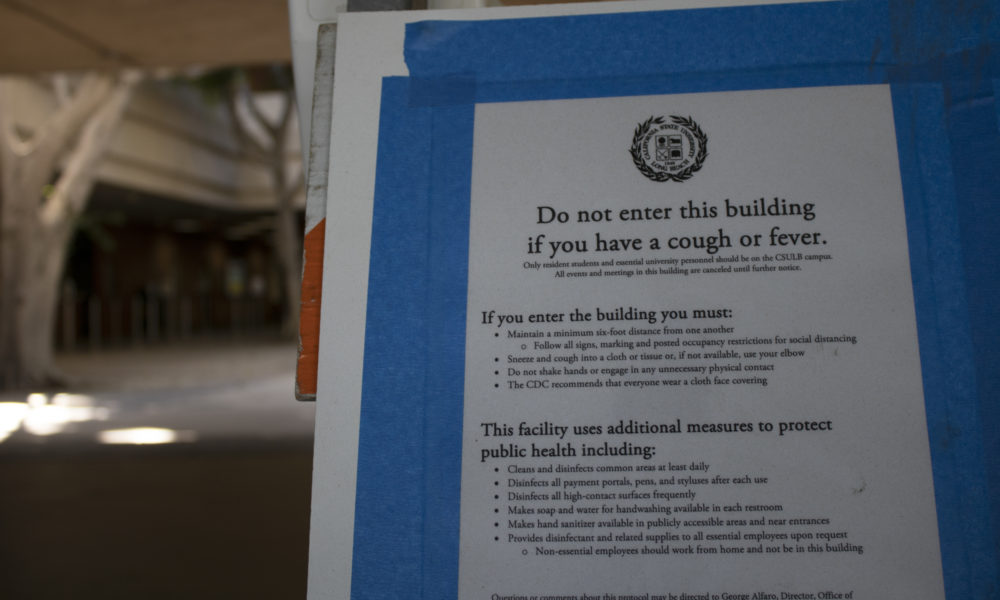Since March 1, Long Beach State has identified a total of 66 cases of coronavirus affiliated with the university, according to a study done by the New York Times.
“All of [this] is very difficult and time consuming work,” President Jane Close Conoley said in an email. “On the good news side, our average is about 2.8 cases per week, that’s a very low positivity rate, but we’re not complacent to be sure. The hard truth is that we’ll have to be vigilant for many weeks to come. I know that it’s very difficult for all of us.”
The last official report of COVID-19 cases came on April 9 when only five members of the Beach community had tested positive for the virus. At the time, four students and one staff member tested positive and have since recovered.
“The most recent positive cases were two graduate students,” Conoley said. “We don’t know of cases where the exposure was on campus, most reported not being on campus in the prior two weeks to being tested.”
Of those who have been affected, Conoley said it’s been about half and half between students and faculty, with students having more mild cases of the virus.
“It’s important to note that in our predominantly virtual environment there is no formal mechanism for tracking the health status of those affiliated with the university, and there are also strict laws about the privacy of health data,” Conoley said. “The cases we know about are largely not ‘on-campus cases,’ and therefore do not directly impact the health and safety of our students, faculty, and staff”
Every Monday morning, medical director of Student Health Services, Kimberly Fordran, briefs the president and the administration on the current numbers of COVID-19 cases affecting the campus.
“We have a number of cases under investigation,” Conoley said. “Unfortunately it’s taking over a week to get results.”
The California State University system currently has no unified reporting system, according to Luoluo Hong, the CSU associate vice chancellor for student affairs and enrollment management.
One reason for this, Hong said during Cal Matters’ town hall with Chancellor Timothy P. White, is because students and faculty get tested at a wide range of testing sites, making it difficult to congregate the information.
Conoley said the lack of access to rapid testing is also still standing in the university’s way of staying on top of the situation.
“Without rapid and easily accessible testing we are at a disadvantage,” Conoley said. “We’re exploiting a number of partnerships we hope that will allow us to get real time results to our community members. We are doing contact tracing when we discover cases and informing those who may have been exposed.”
Since classes resumed on Monday, roughly 1,000 students are now on campus daily, although no new cases have been reported. Conoley said she’s expecting an update from Fordran this coming Monday.
For now, students and faculty are expected to report positive results to the health center or to faculty chairs.
“We are depending on the health questionnaire we’re using for those who are coming to campus to inform us about people who have symptoms,” Conoley said. “When they reporter a fever or a cough, our medical staff will follow up with them.”
This article was updated on Aug. 31 at 11:55 a.m. to better reflect the information noted in the study by the New York Times.





In your first paragraph, you use the term “on its campus.” The cases we reported to The New York Times are cases known to us that are affiliated with CSULB cumulatively since March. This clarification might be useful to your readers.
Thank you for amending your characterization.